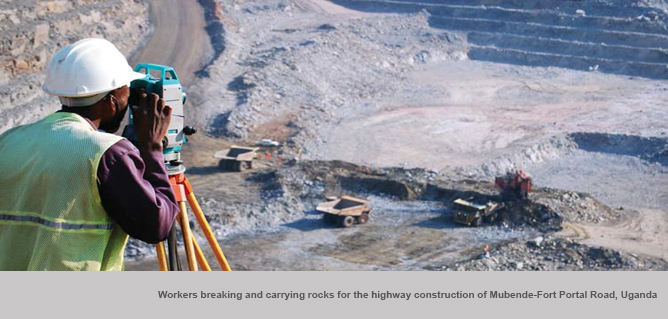
Things to KNOW
- For the landlocked developing countries, given their disadvantaged position whereby they cannot control shipping conditions outside their borders and depend on trade corridors to access seaports or regional trade partners, the state of trade corridor infrastructure, rehabilitation needs, and, above all, sustainable resources for maintenance are key concerns.
- However, owing to the small scale of many of these countries, Governments face enormous diffi culties funding large-scale fi xed costs associated with infrastructure development. Inadequate infrastructure development and investment for the improvement of transit routes have remained among the top constraints on improving their competitiveness.
- Regional collaboration, through effective regional institutions, backed by a strong political consensus, allows for the common setting of priorities for regional investments, management and development of road and rail trade corridors linking landlocked developing countries in Asia, Africa and South America to seaports.
- Road freight remains the dominant mode of transportation on trade corridors in nearly all LLDCs. Alternative transport modes, such as rail, air and waterways, provide competition to road transport operators and offer some security against disruption of a sole transport source. Only about half of the LLDCs have a rail link connecting them to seaports in coastal transit countries. Eight LLDCs have both rail and waterways.
- Railway infrastructure and services especially in sub-Saharan African LLDCs and transit countries are overall in poor conditions and plagued by low interconnectivity. Therefore the potential of rail transport to expand LLDCs’ trade opportunities is generally underused. Inland waterways are not fully exploited.
Things to DO
- Allocate greater share of national resources to the development of infrastructure, including missing links in regional and subregional transport networks, supported by scaled-up financial assistance by the international community.
- Give priority to transit corridors and completion of missing links in the sub-regional and regional infrastructure development plans.
- Establish a sound regulatory and institutional framework as a prerequisite to attract private investment in infrastructure projects.
- Provide a conducive environment for using all transport modes in transit transport service and encourage competition among different transport modes.
- Foster development of capacities and legal regimes for multimodal transport operations.
- Promote private-public partnership platforms along trade and transport corridors through the development and extensive use of common information and communication technologybased management and monitoring systems.
- Development partners should provide landlocked and transit developing countries with appropriate, substantial and bettercoordinated technical and fi nancial assistance, particularly in the form of grants or concessionary loans, for the construction, maintenance and improvement of their transport, storage and other transit-related facilities, including alternative routes and completion of missing links.
Key Achievements and Challenges
- A great number of infrastructure development and upgrading projects of regional and sub-regional relevance are underway in all regions involving landlocked developing countries with the fi nancial support of the donor community.
- In Asia, in the context of the Asian Highway and Trans-Asian Highway network, notable progress has been made in the upgrading of road infrastructure. In Africa, major road projects are being implemented under the Action Plan 2012-2020.
- Although some progress is being made in developing and maintaining road infrastructure, outstanding challenges include inadequate resources for road funds, overloading of vehicles, and resource gap for road infrastructure development.
- Investments in transport and transit infrastructure require certain trade volumes to be commercially viable. With low trade volumes, transport services are less frequent and there is less competition. Diseconomies of scale lead to higher transport costs, which in turn lead to lower trade volumes. In order to overcome these limitations, LLDCs should increasingly seek fi nancing for integrated trade and transport infrastructure projects with a sub-regional corridor approach.


